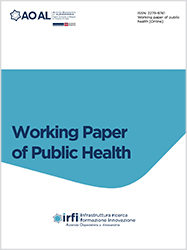The psychological impact of asbestos, an invisible killer of body and mind

Accepted: 11 July 2016
All claims expressed in this article are solely those of the authors and do not necessarily represent those of their affiliated organizations, or those of the publisher, the editors and the reviewers. Any product that may be evaluated in this article or claim that may be made by its manufacturer is not guaranteed or endorsed by the publisher.
Introduction: Exposure to asbestos causes the onset of various diseases, including lung plaques, asbestosis and malignant pleural mesothelioma (MPM). Living in a Contaminated Site can therefore represent for the entire community a real cumulative trauma that brings into the field disease and death due to a kind of "invisible killer": asbestos. In such circumstances, it is necessary to implement multidisciplinary protocols that can offer an integrated approach to care for both patients and their caregivers. Methodology: There is now a large body of scientific evidence in the literature substantiating the importance of the role that clinical psychology can play in oncology. The objective of this work is to describe specifically the situation in Casale Monferrato, the research carried out in the area and to outline the psychological-clinical intervention proposed there to respond to the quality of needs highlighted in patients suffering from asbestos-related diseases, including mainly MPM, and their caregivers. Results: The results of the research carried out in Casale Monferrato highlight what emerges in the international literature, namely that patients with asbestocorrelated diseases frequently manifest anxiety, depression, somatic disorders and a certain tendency to social withdrawal. The psychological-clinical work within the intervention of short-term group psychotherapy offers them a setting in which they can historicize the disease and process the many facets of pain that an inauspicious diagnosis brings to the field: from the one more related to the body, to the more purely psychic. Conclusion: The role of clinical psychology in oncology is of fundamental importance both for the patient and for his family, as it can facilitate the processing of suffering and anger related to the diagnosis of cancer disease or having to take care of a loved one who has been given an inauspicious diagnosis. Psychological intervention also allows to give name and meaning to the fear related to exposure to asbestos: a silent and invisible killer, which otherwise risks remaining unthought of and unthinkable.
PAGEPress has chosen to apply the Creative Commons Attribution NonCommercial 4.0 International License (CC BY-NC 4.0) to all manuscripts to be published.

 https://doi.org/10.4081/wpph.2016.6693
https://doi.org/10.4081/wpph.2016.6693




